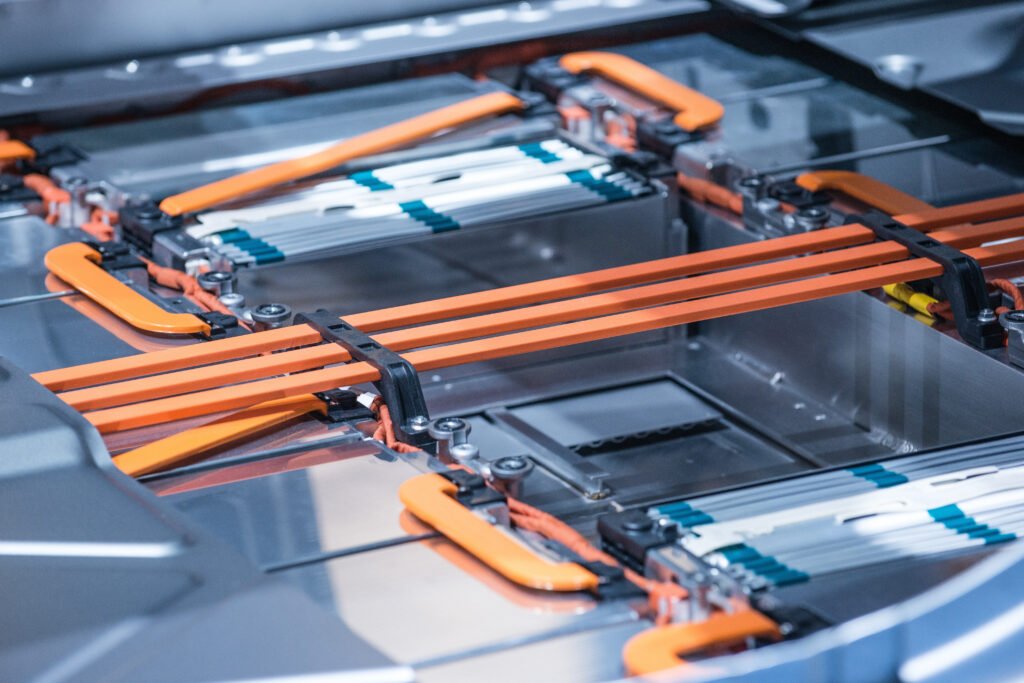Snippets
- A breakthrough study reveals EV batteries may last up to 40% longer with advanced management systems.
- This innovation could significantly reduce waste and improve the cost-effectiveness of electric vehicles.
- Learn how this technology impacts EV adoption and global sustainability goals
Table of Contents
ToggleIntroduction
Did you ever think your electric vehicle (EV) battery could last nearly half as long again? Well, groundbreaking research has brought us closer to this reality. Scientists have developed advanced techniques to extend the life of existing EV batteries by a staggering 40%. This isn’t just a minor tweak; it’s a game-changer for sustainability and affordability in the EV market. By focusing on optimizing battery management systems, researchers are proving that the future of EVs could be more efficient and less wasteful than we imagined. Let’s dive into this electrifying discovery!
The Science Behind the Discovery
Did you know that the way we manage a battery’s charging and discharging cycles can make or break its longevity? It turns out that improving how energy flows within EV batteries can extend their life by up to 40%. Scientists have been laser-focused on refining Battery Management Systems (BMS), the brain behind every electric vehicle’s power source. This system monitors and controls energy usage, ensuring the battery operates within safe limits.
So, what’s new? The breakthrough lies in algorithms that can predict and mitigate battery wear. Think of it like a fitness tracker for your EV’s battery—spotting stress points and optimizing energy output to prevent long-term damage. Researchers are also improving thermal management, keeping batteries cool under pressure, which is crucial since overheating is one of the biggest culprits of battery degradation.
These tweaks don’t require inventing new batteries but instead make better use of the ones we already have. Isn’t it incredible how small changes in software can lead to such massive gains in hardware performance?

Why It Matters: Environmental and Economic Impacts
If EV batteries last longer, we’re talking about less waste, lower costs, and a cleaner planet. First off, longer-lasting batteries mean fewer discarded cells piling up in landfills or requiring energy-intensive recycling processes. With EV adoption skyrocketing, the potential environmental savings here are huge.
On the economic front, consumers stand to benefit big time. Batteries are among the priciest components in an EV, often making up 30–40% of the vehicle’s cost. By extending battery life, owners won’t need to replace them as frequently, slashing long-term costs and making EVs more accessible for the average driver.
But the benefits go beyond your driveway. Mining for raw materials like lithium and cobalt is not only expensive but also harmful to the environment. Longer battery life could ease the pressure on mining operations, reducing habitat destruction and carbon emissions from resource extraction. It’s a win-win for your wallet and the world.

Stay Informed. Stay Ahead
Join a community that goes beyond the headlines. Our newsletter delivers:
🔹 Curated Industry Insights
🔹 Expert Analysis
🔹 Actionable Impact
No fluff. No generic updates. Just meaningful insights that help you lead in a fast-evolving industry.
Challenges to Implementation
Here’s where things get tricky. While the technology is promising, rolling it out isn’t as simple as flipping a switch. For starters, existing EVs might not be fully compatible with these advanced battery management systems. Retrofitting older models could be complex and costly, potentially slowing adoption.
Then there’s the balance between performance and cost. Manufacturers need to ensure that these innovations don’t jack up the price of EVs, especially when affordability is a major barrier to adoption. Designing systems that are both high-performing and cost-effective is no small feat.
Let’s not forget the regulatory landscape. New technologies often face delays due to testing, approval, and standardization processes across different countries. Aligning global standards for EVs and their components is a daunting challenge that could impact how quickly this breakthrough reaches the market.
What This Means for EV Owners
Imagine owning an EV and not worrying about battery replacement for an extra five or ten years. That’s the reality this innovation could bring. For EV owners, extended battery life translates to significant savings—not just on replacements but also on resale value. After all, who wouldn’t want a used EV with a battery that’s still in top-notch condition?
There’s also the convenience factor. Longer battery life means fewer instances of reduced range over time, which is a common frustration among EV owners. This advancement could even push more people off the fence and into EV ownership, knowing their investment will last longer.
It also opens up exciting possibilities for second-life applications. Imagine your EV battery still working well enough to power your home or feed into the grid once it’s done in your car. With extended battery life, these secondary uses become even more practical and sustainable.
The Road Ahead for EV Innovation
This breakthrough is just the beginning. As EV technology evolves, these advancements in battery life could pave the way for even more ambitious innovations. Next-generation solid-state batteries, already hailed as the future of energy storage, could incorporate these management systems for unprecedented longevity and efficiency.
Major automakers and battery manufacturers are likely to jump on this trend, integrating the technology into their upcoming models. Partnerships between research institutions and industry leaders will be key to scaling this innovation globally.
Beyond vehicles, this technology has potential in renewable energy storage systems. Picture wind or solar farms equipped with batteries that last longer, storing more energy with less waste. It’s a game-changer not just for transportation but for the energy sector as a whole.
As these technologies mature, the transition to a greener, cleaner future becomes more attainable. The only question is: how soon can we get there?
Conclusion
The potential to extend EV battery life by 40% is more than a technological breakthrough—it’s a transformative leap for sustainability, economics, and energy innovation. With less waste, lower costs, and greater efficiency, this advancement could redefine what we expect from electric vehicles and their impact on the planet.
Now it’s your turn—what do you think? Could this breakthrough make EVs the go-to choice for the next generation of drivers? Share your thoughts and join the conversation about this electrifying future!







Solid article! Thinking about bankroll management & adapting to different player pools is key in tournaments. Seeing platforms like 33wim game cater specifically to local players is smart – localization matters! Good read.
Interesting read! The statistical diversity in online gaming is fascinating – platforms like J8PH clearly prioritize a data-driven approach. Considering security & access, check out the j8ph app download for a streamlined experience. KYC is key, though!
Roulette’s reliance on probability is fascinating – seemingly random, yet governed by mathematical laws! It’s cool seeing platforms like legend link maya embrace easy funding options – seamless transactions really enhance the experience. Fun & ease are key!
Interesting analysis! Seeing platforms like JL BOSS innovate with live dealer games & security is key for growth. Considering a new account? Check out jl boss download – streamlined registration seems promising! It’s exciting to see tech shaping online entertainment.